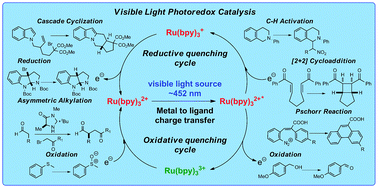Visible light photoredox catalysis: applications in organic synthesis
Abstract
The use of visible light sensitization as a means to initiate organic reactions is attractive due to the lack of visible light absorbance by organic compounds, reducing side reactions often associated with photochemical reactions conducted with high energy UV light. This tutorial review provides a historical overview of visible light photoredox catalysis in organic synthesis along with recent examples which underscore its vast potential to initiate organic transformations.


 Please wait while we load your content...
Please wait while we load your content...